VITRIFIED TILES FLOORING | An Architect Explains
Vitrified Tiles are similar to, but better than Ceramic tiles. Vitrified tile is a tile which has undergone a process called vitrification that gives it extremely low porosity, and thus, very low water absorption. It is hard and strong, as well as stain resistant. A high quality vitrified tile has a lot of benefits over natural Marble or Granite tiles and hence is very popular in residences nowadays.
Vitrified tiles have both advantages and disadvantages. It is useful to know the characteristics of Vitrified tiles, its usability and suitability as a flooring option. As an Architect, I have described Vitrified tiles along with it’s features under the following headings so that you can decide whether it is suited for your requirement and your space:
What are the characteristics of Vitrified tiles?
What are the advantages of Vitrified tiles flooring?
What are the disadvantages of Vitrified tiles flooring?
Where is Vitrified tiles flooring best suited?
WHAT ARE THE CHARACTERISTICS OF VITRIFIED TILES?
- Composition: Vitrified tiles are made by fusing silica and clay. The mixture is then heated to high – fiery temperatures, which results in a non – porous tile with glass – like texture. Unlike Ceramic tiles, the vitrified tile doesn’t need additional glaze to be added on to it.
- Physical properties: Vitrified tiles possess much better mechanical strength and scratch-resistance compared to Marble or natural Granite.
- Thickness: Vitrified tiles are generally 10 to 12 mm thick, half the thickness of natural stones like Marble or natural Granite.
WHAT ARE THE ADVANTAGES OF VITRIFIED TILES?
- Very durable: in comparison to Ceramic, Marble and Granite.
- Consistency: Being machine-made products, Vitrified tiles are consistent in sizes, shades and thickness unlike the variable sizes and shades of natural materials.
- Quality: Vitrified tiles are man-made, so their quality can be guaranteed – tiles that do not meet standards are simply not packaged and sold. On the other hand, the quality of Marble and Granite is a matter of chance.
- Laying and Setting time: Vitrified tiles are easier to install and need practically no setting time or polishing after laying. Therefore they can be used within 48 hours after they are laid.
- Thickness: Vitrified tiles are half the thickness of Marble, Granite and other natural materials.
- Bright: A glossy and sparkling floor with vitrified tiles reflects much more brightness; at the same time, matt finished tiles or less reflective tiles underplay excess light.
- Colour permanence: Direct exposure to sunlight will neither alter the colour of the tiles nor cause them to fade.
- Non-porous: Vitrified tiles have very less water absorption index and are stain resistant.
- Hygiene: Being moisture resistant, Vitrified tiles prevent bacteria and fungi from growing.
- Easy to Clean: One of the biggest benefits of Vitrified tiles is that they are very easy to clean and maintain.
- Cost Effective: Vitrified tiles are cheaper than many other types of flooring.
- Wide range and choice: Vitrified tiles are available in many colours, patterns, designs, sizes.
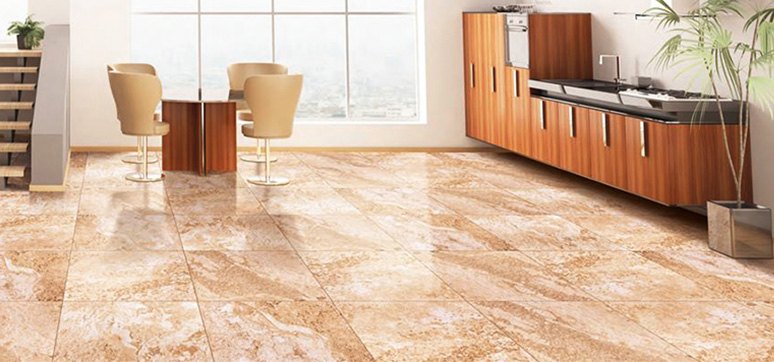
WHAT ARE THE DISADVANTAGES OF VITRIFIED TILES?
- Installation: Tiles need to be installed by an expert tile layer to ensure thin, even and neat joints between the tiles.
- Repair:The tile with the defect must be cut away along the grout lines and surrounding material could be damaged in the process. Moreover, it is quite unlikely that you will find the same tile after some years.
- Slippery: Vitrified tiles are slippery when wet.
- Grout Maintenance: Every year or two, the grout must be resealed or it will begin to look dirty. Worse still, the sealant will create a hazy finish on the tiles if allowed to dry.
- Not a green option: Vitrified tiles are not environment friendly as the process of making them causes a significant expenditure of energy and carbon dioxide.
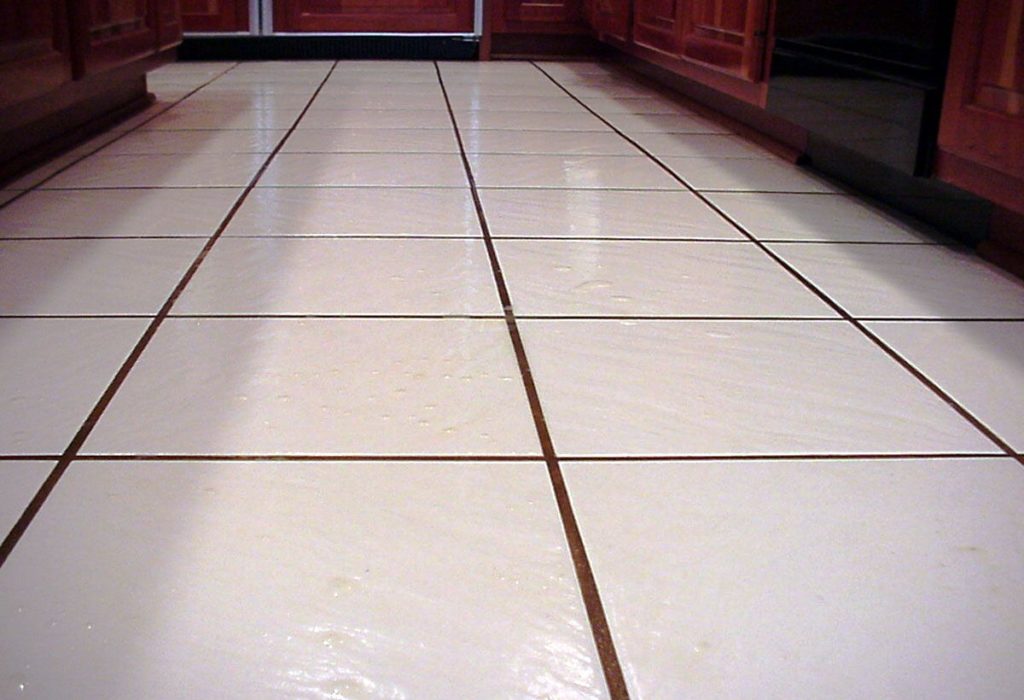
WHERE ARE VITRIFIED TILES BEST SUITED?
Because they are cost effective, easy to clean, water-resistant and very durable, vitrified tiles are suitable in a number of places – as flooring, wall covering, back-splash, bench tops and showers. However vitrified tiles look artificial. In comparison other man-made options like concrete which has a more earthy feel and terrazzo which looks elegant are available. But if economics is your driving concern, you should consider resilient flooring.
For information on other flooring options, go to:
- Flooring | Natural Material Options
- Flooring | Man-made Material Options
- Flooring | Resilient Material Options
READ MORE:
In order to get a rough idea of the suitability of a particular flooring for your requirement and to make a fair comparison of the different types of flooring, refer to an Architect’s rating of the various kinds of flooring on my blog: House construction in India
If you found this post useful, all it takes is a simple click on the “pin it” “like,” “share,” “tweet,” or Google+ buttons below the post.

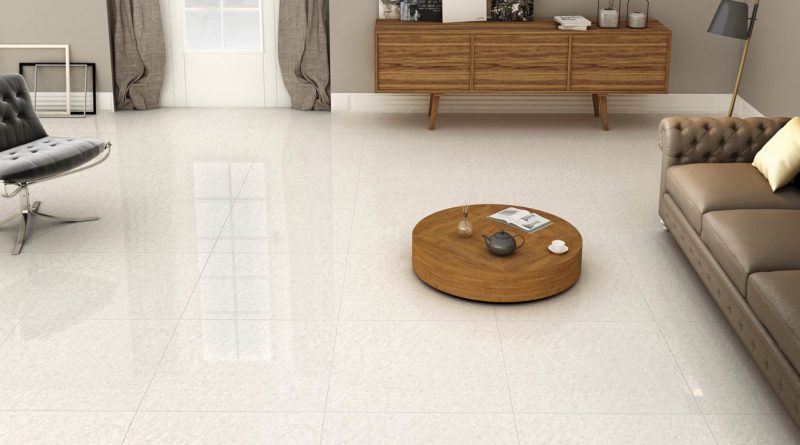
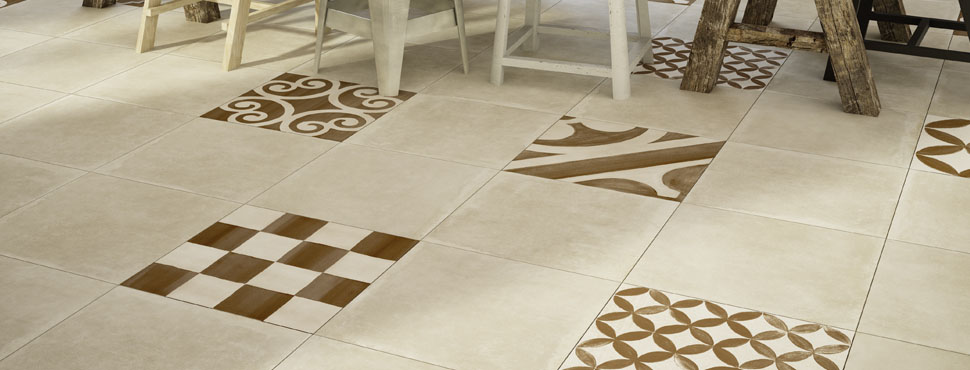
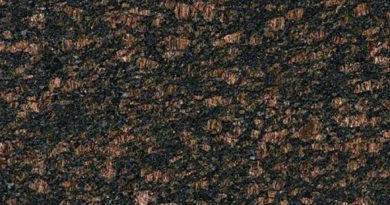
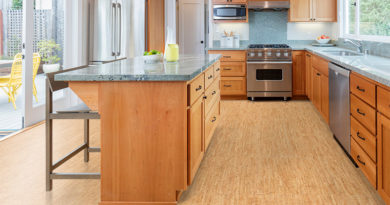
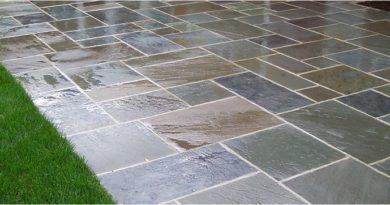
Which is better option tiles or marble for floor ?
Hi,
We have constructed a house in 2014. we have used Kajaria floor tiles for our flooring. Now we are planning to construct a small room in our hall. Please let us know if we can start erecting a wall on this flooring tiles or we need to remove this flooring tiles and erect the wall. The 10 feet wall we planned to construct will be using an 8 inch cement hollow block.
Dear Sir/Mam,
Which is the best color combination for flooring & wall paint colors to have ample lighting in my house? I am going for vitrified tiles. Please suggest in terms of light / dark colors or in combinations.
Thanks & Regards
Vinay
I am in a process of flooring by vitrified tiles after chipping the mozice floor. I am observing in few tiles are having ovality resulting in difference in level. Can you through some solution of this & why this ovality. What is the max. ovality allowed in vitrified tiles.
Sir , I selected rak tile for floor in my house, the size of which is1198 MMX 598 mm.the tile worker is now telling that since it is a bigger tile we have lay it by giving a gagap in between and filling it with some sealent. Now for this the labour is double .is it the usual way with bigger tiles. Please reply
Hi Jugnu,
If the tile is of very good quality (not second quality), then the joints can be minimal. However most big tiles are not perfectly flat and hence the need for little bigger joints.
Admin
I am looking for a cheap tile for terrace/ Do you prefer vitrified tiles for terrace flooring? If yes, how? Please explain
Thank you
Santosh
Hi Santosh,
Do not use vitrified tiles on the terrace as they will warp and crack with the heat. Use terracotta tiles instead.
Admin
HI,
Our house is under cosntruction.Builder is going with Kajario vertified tiles and we have an option to select.
I see there are many types of tiles like double charged,full body,digital.I am not sure which one to select based on my below expectation.
1.Tile should not be too skid i any part of the house.Which one i should select for living and bedrooms.
2.Which type can be selected for bathroom,kitchen and balcony (in balcony we have wash area also).
Please specify based on cost and quality.
Thanks.
Hi Sivaleela,
Double charge vitrified tiles are fed through a press that prints the pattern with a double layer of pigment, 3 to 4 mm thicker than other types of tile. This process does not permit complex patterns but results in a long-wearing tile surface, suitable for heavy traffic commercial projects due to the extra thickness.
Full body vitrified tiles have pigment in entire body (thickness) of the tile. This makes chips and scratches less noticeable and make this an ideal choice for high traffic zones, but the process significantly increases the cost.
Glazed digital tiles (GVT) have a glazed surface. They offer a wide variety of design, art work and surface textures like wood grain, bamboo, slate or stone. This is also an expensive process, but the cost is dropping as digital printing techniques are introduced.
So from the above specs, you can decide which quality of tiles you want to go for. Regarding the finish, opt for slightly less glossy for the main rooms and matt for the wet areas. This will prevent slipping.
Admin
How does a Chinese made vitrified tile compare to Indian ones. The price is much less and the tile looks good!
Hi Jyothi,
We can never be sure about chinese products as we have no way of checking the materials used in the manufacturing process and the quality control. There is the possibility that they may have some toxic components or may chip easily. So it is safer to go with Indian ones. Many of them offer warranty too.
Admin
Hi, Would like to know if there are any standards in India on laying of Floor Tiles (Vitrified and Ceramic. Would like to know on the minimal spacing permitted in India as standard in case you are buying a built appartment
Hi Crayz,
No one follows any standards. But most tile layers have their own standards. If the tiles are of good quality, they can be laid with very minimum spacing (space is required to allow for expansion during weather changes). But if the tiles are of second’ quality, they need to spaced a little apart to allow for the imperfections in the sizes of the tiles. So by visual examination of the gaps, you can make out if the tiles are of good quality or not.
Admin
Do you suggest Vetrified tiles for old aged people? How do you compare slippery nature of Vetrified tiles with granite or marble-medium shining please?
Hi Mohan,
Highly polished granite and marble are very slippery, especially when wet. vitrified tiles are also slippery when wet, but you can opt for matt finish vitrified tiles.
Admin
some are telling oil is getting absorbed by vitrified tiles i have seen in some places also. Is it true ?why is it so ?
Hi Subbulakshmi,
Vitrified tiles undergo a process called vitrification and have very low porosity. Therefore they are resistant to stains, oil water. But if the process of vitrification is not done properly, then the tiles are likely to be porous. So if you get a big discount on the tiles or buy second quality tiles, you can expect such problems.
Admin
Yeah, vitrified tiles provide exceptional beauty on the floor of the room but the price is also a consideration price
Kudos on your blog work. I like the way you explain the facts behind the myths.I have a general question which might answer my query for buying a house.Does Indian Vastu applies for all houses constructed around the world ? We live in Singapore where landed property is meagre and you are left with the option to choose an apartment. And here apartments are mostly allocated by lot system.
We are going to buy a house here which has south-west entrance. And I am really not sure if its good or very bad. Since this is a govt built apartment, we can not hack down walls and make any design changes. Is there any way to make the best out of this house for us ?Hoping your reply soon, as we have to finalize the payment soon.
Thanks & Regards,
Aparna K
Hi Aparna K,
Vastu principles are generally applicable to houses in India because these principles are based on the wind directions, sun position, seasons that are typical to India. Since you live in Singapore and also have so many limitations, why worry about Vastu? Instead understand the essence of Vastu Shastra principles. This means you focus on good ventilation, ample lighting of the house and a clutter-free environment.
Admin